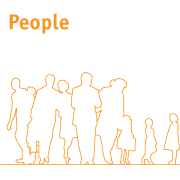Navigating the Sea of Sustainability Standards (II of III)
Part one (Places) of our three part series, Navigating the Sea of Sustainability Standards explored the role of standards within an expanding green building market. In summary, certifications and standards have ushered in a new era of green building development, by establishing a set of shared principles, which has led to rapid market uptake. Given the success and widespread expansion of rating systems such as LEED and Energy star into the design, construction and operations industry, we ask next what certifications and standards might best apply to an organization and its people.

First let us acknowledge that we aren’t the only ones discussing the emerging role of standards in the green and clean-tech sectors. In fact, the folks at SustainAbility have created an excellent report which clearly describing the strengths and weaknesses of current certification and rating systems in their report titled: Signed, Sealed…Delivered? Behind Certifications and Beyond Labels. The authors present valuable insight and analysis regarding the respective role of standards, certifications and labels, and offer their opinions on the future role these systems will continue to play in our future economy. The role of standards designed to document environmental performance will continue to serve a differentiator for building owners, business organizations, and their processes and products. At evolveEA we not only help our clients implement sustainability best practices across the vectors of People, Process and Place, but help clients determine which third party certification standard(s) best ensure continued progress toward sustainability goals and expanded market recognition. As such, the following sustainability standards are widely recognized as leaders in the field of Organizational Culture and People:
B Corp: Becoming a Benefit Corporation requires organizations to fundamentally restructuring bylaws so that leadership can pursue the complimentary goals associated with growth and social benefit. The structure “allows directors of benefit corporations to consider employees, community, and the environment in addition to shareholder value when making operating decisions.” The B-Corp label has grown quickly with over 450 member organizations and legislation across a number of states supporting the B Corp legal designation.
Global Reporting Initiative: GRI has pioneered and developed a comprehensive Sustainability Reporting Framework that is widely used around the world. The Framework enables all organizations to measure and report their economic, environmental, social and governance performance—the four key areas of sustainability.
The Reporting Framework—which includes the Reporting Guidelines, Sector Guidelines and other resources—enables greater organizational transparency about economic, environmental, social and governance performance. This transparency and accountability builds stakeholders’ trust in organizations, and can lead to many other benefits. Thousands of organizations, of all sizes and sectors, use GRI’s Framework in order to understand and communicate their sustainability performance.
Carbon Disclosure Project: The Carbon Disclosure Project (CDP) works to transform the way the world does business to prevent dangerous climate change and protect our natural resources. They see a world where capital is efficiently allocated to create long-term prosperity rather than short-term gain at the expense of our environment. The CDP has successfully leveraged and incentivized the world’s largest companies to voluntarily report emissions and other environmental data resulting in a cohort of organizations that focus on decisions that are able to mitigate risk and make investment decisions that drive sustainable actions. Currently the CDP works with over 71 institutional investors with over 71 trillion under management and 50 fortune 500 organizations on supply chain issues.

